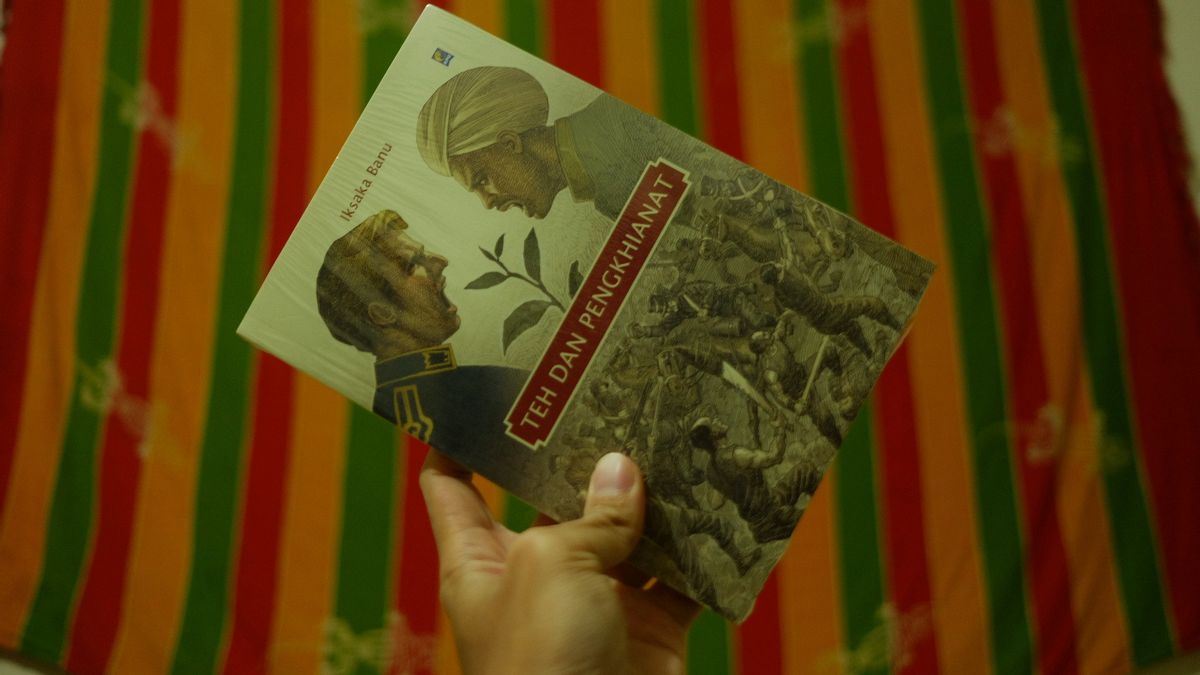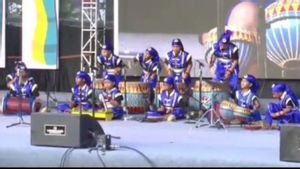JAKARTA - For some people, studying history is boring and a waste of time. Even if there are those who consider it important, then their assumption of history is only considered a complement and a prerequisite for completing educational exams or realizing dreams of becoming a scholar.
This is similar to hearing the preamble of the 1945 Constitution (UUD 45): Safely escort the Indonesian people to the gates of the independence of the Indonesian state.
Yes, just getting to the gate, not trying to walk straight, force your way in, or enjoy the passion that freedom offers. But, it can't be helped. Such is the reality of history and its charm in the eyes of today's generation.
Do not want to dismiss reality. Most people do think that way. However, after processing, getting to know a lot of historical literature, meeting historians, taking part in tracing a historical place, or having the opportunity to get to know literary works with historical themes, that view can change.
Read Iksaka Banu's work, for example. His short stories, ranging from the Queen of Spades, All for the Indies, to his latest novel, The King are an incentive to love history. Why can Iksaka Banu's work have such an impact?
The answer is simple. Iksaka is one of the best writers who is able to put a historical event together into a story that is interesting, thrilling and able to generate curiosity.
This is in accordance with Iksaka's own expectations. "Writing historical fiction is to become a small bridge, the initial introductory point for the younger generation to be attracted to the history of our country, which is really rich and colorful," he said in a statement.
Tea and Traitor
Before opening Teh dan Pengkhianat, a question arises: Can this collection of short stories with a historical background look better (or more mundane) than his previous work entitled All Untuk India?
Luckily, the 13 short stories summarized in Teh dan Pengkhianat can keep up with previous works. Even though the ingredients used are still relatively the same, which focuses more on the character of a Dutch alias white, both pure and classified as Mestizo - half European-blooded - while spreading messages that history is not always black and white, but colorful. .
The stories told this time are more interesting because they don't just talk about war. The beginning to the end can touch on humanitarian issues, cases of blind fanaticism, hope, sacrifice, to struggle, in this case the struggle against injustice.
The realm of humanity in this work can be seen from the writing entitled "Kalabaka". The article raised historical facts related to the massacre of the Banda Neira people in Maluku (Banda) by the army. The attack was even said to have involved a hundred mercenary samurai or ronin.
It is said that a schutterij - a non-military militia from respectable circles who were adept at using weapons - who in fact still had a conscience and rejected violence in the area, even though he was convicted.
Second, the case of blind fanaticism. This is presented crisply in the article entitled Tegak Dunia. This story focuses on the presence of the Globe - an imitation of the earth - in silencing the opinion of religious leaders at that time who believed that the earth was flat, because they were so fanatical with religion.
Feeling tired of this reality, a senior Schutterij official named Captain Zwarte Van de Vlek wrote on page 21: That the earth is round is the greatest heresy that Christians commit to their own people.
Regarding the flat earth itself, even though it has entered the 21st century, this belief is in fact still believed by many people to this day. The discussion opens on page 28. "He may be loyal to his convictions, but he cannot threaten those who already have more evidence and are tested by many people."
Third, the case of Hope. One thing is manifested in the form of the short story Belenggu Emas which tells the story of the admiration of a white woman to an indigenous woman who is predicted to be a reformer.
This woman is none other than Rohana Kudus, one of the pioneers of emancipation - apart from Kartini - who became a figurehead of the women's movement in West Sumatra, and published a newspaper that brought with her hope for the advancement of women, Soenting Melajoe (SM).
The admiration of white women is clearly visible on page 115 when she says: I have to meet this extraordinary Minang woman. The woman who had been an inspiration to many in the Indies.
Fourth, the case of sacrifice, which is found from the short story Variola. The story that raised the way the Indies fought the smallpox epidemic which spread very quickly in the archipelago. At that time, people in Ambon, Ternate and Bali even died.
Therefore, vaccine delivery from the Netherlands emerged as a solution and was accompanied by another solution in the form of vaccine production in the archipelago. However, both solutions tend to take a long time. Does not match the precarious situation that happened.
Like it or not, prevention efforts must be hastened. Another solution is to find orphans in Batavia. After that, they were brought to Bali. On the way, their bodies were put in a vaccine to be harvested for many people so that they would immediately rise to conquer the disease.
Despite the rejection, in the end this solution could prove that white people did not only colonize. There is a deep sense of humanity within them.
Lastly, about the struggle. This is explained nicely in the same short story as the book title, namely Teh dan Pengkhianat. In this story we will see the contradiction that it is workers from China who are fighting against hypocrisy.
They carried out a rebellion based on two points, namely the salary which was far from agreed upon and of course because of the cruelty of the leader who often punished excessively. Uniquely, the Dutch East Indies government, at that time, used Indonesians who were quite famous to beat back the rebellion.
The figure used by his services is Alibasah Sentot Prawirodirjo, a former war general from Diponegoro. Herein lies the color of history. Who is right and who is wrong, again is only a matter of point of view and interests.
It seems that the five short stories can illustrate that Iksaka Banu is really serious in inserting the understanding that history is really interesting if it is studied from many sides that are not only black and white, but in color.
After reading this book, there is a desire that Iksaka Banu's next works can be quickly summarized - if they need to be recorded - so that people can learn about history that is not always black and white.
Book Title: Tea and the Traitor
Author: Iksaka Banu
Published & Printed: April 2019
Publisher: (KPG) Popular Gramedia Libraries
Number of Pages: 164
NB: Photo of the Tea Book and the Traitor | Doc Prib
The English, Chinese, Japanese, Arabic, and French versions are automatically generated by the AI. So there may still be inaccuracies in translating, please always see Indonesian as our main language. (system supported by DigitalSiber.id)













